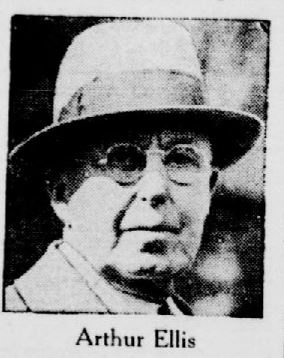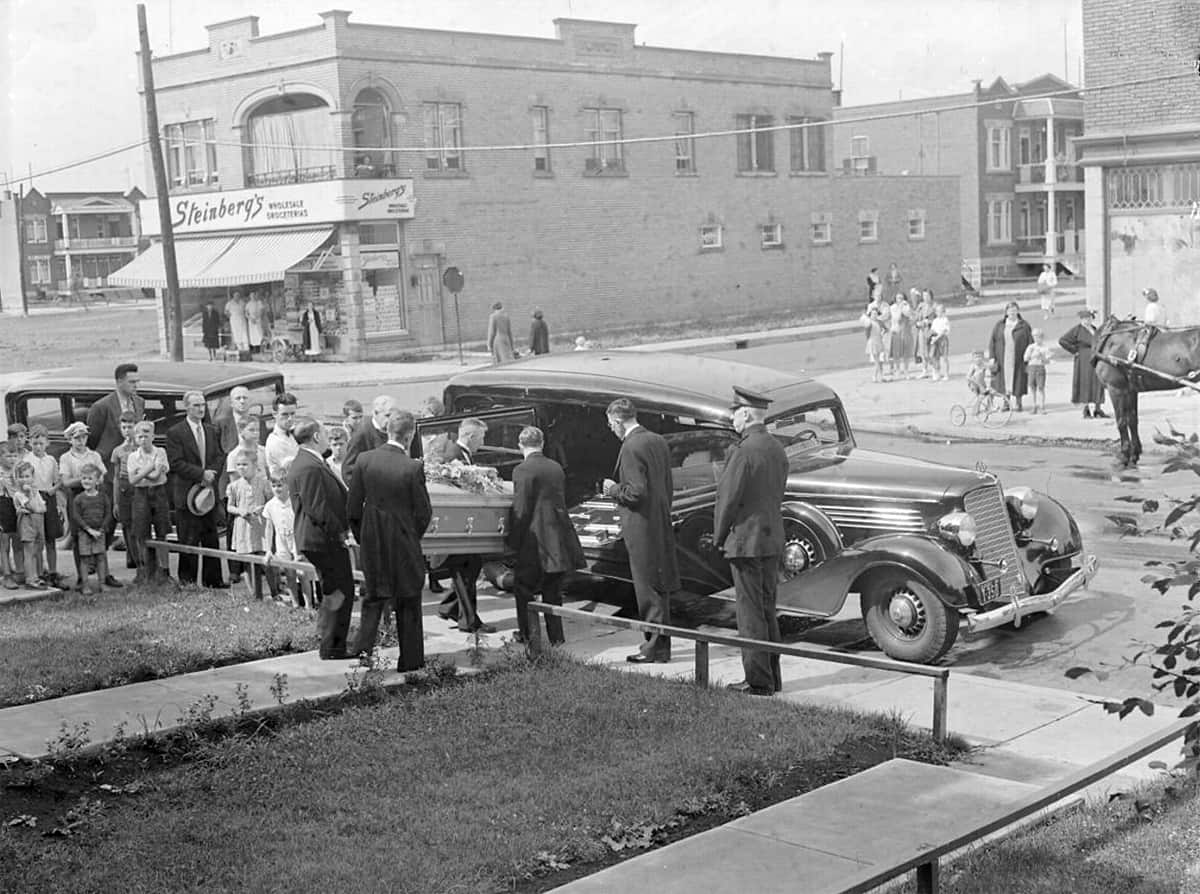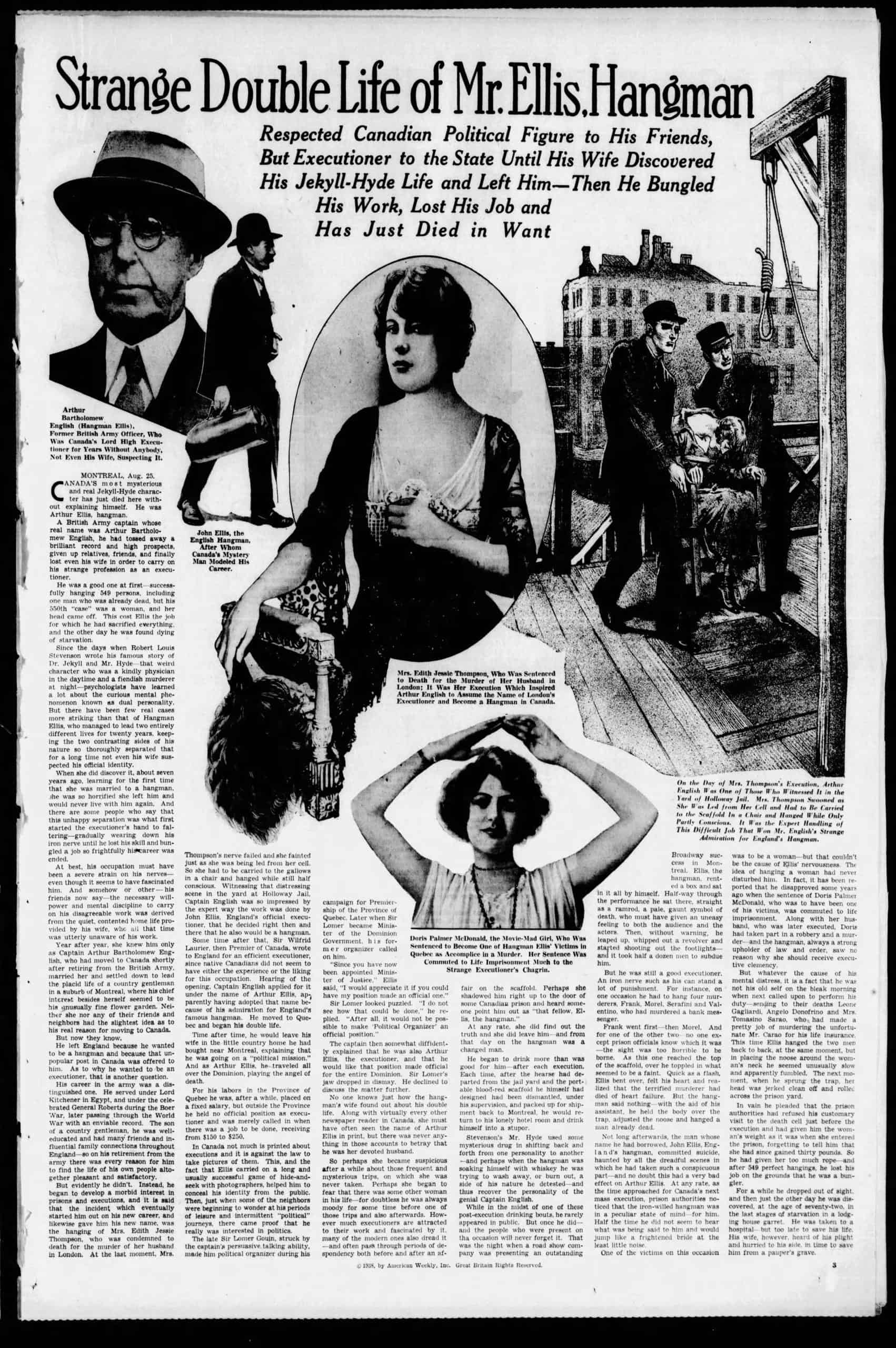 When Arthur B. English accepted an offer of employment from the government of Canada around 1913, he was not engaged as a typical public servant. He was hired to fill the role of official executioner to the Dominion of Canada. Under the professional name “Arthur Ellis” (likely inspired by English hangman John Ellis), English travelled from coast to coast performing hangings wherever criminals were sentenced to meet their end by the noose.
When Arthur B. English accepted an offer of employment from the government of Canada around 1913, he was not engaged as a typical public servant. He was hired to fill the role of official executioner to the Dominion of Canada. Under the professional name “Arthur Ellis” (likely inspired by English hangman John Ellis), English travelled from coast to coast performing hangings wherever criminals were sentenced to meet their end by the noose.
The goal of hanging seems simple: to quickly break the condemned person’s neck so that death is relatively fast and painless. In Ellis’s time, a table of drops prescribed the length of rope according to the weight of the convict. But calculating the exact length of rope needed was complicated by variables like the thickness of a person’s neck, the springiness of the gallows beam and the stretch of the rope.
In 1915, Ellis set a new record for the speed of a hanging when he executed the infamous criminal Dutch Wagner in 47 seconds. Ellis increased this speed several times over the next two decades. One condemned man’s execution took only 15 seconds!
Hangings did not always go smoothly. When Ellis was called upon to hang Antonio Sprecage, the presiding doctor declared that Sprecage’s heart stopped beating after 8 minutes. However, the body continued to twitch and Sprecage was not declared officially dead for 1 hour and 11 minutes.
Despite becoming Canada’s most well-known and experienced hangman over the course of his career, Ellis made calculations that resulted in excruciating strangulation and occasionally, decapitation.
In 1935, at the age of 71, Ellis was called upon to conduct the execution of Thomasina Sarao at the Bordeaux Prison in Montreal. Sarao had been condemned for plotting the murder of her husband Nicholas Sarao. He was found beaten to death behind Montreal’s Blue Bonnets Raceway in 1934.
When it came to the hanging on March 29, 1935, Ellis calculated the length of Sarao’s rope based on her recorded weight upon entering prison several months earlier. However, Teolis had gained 42 pounds during her time behind bars. Despite his expertise, Ellis apparently did not notice this and neglected to shorten the rope accordingly. Seconds after she dropped through the trapdoor of the gallows, the noose sprang back empty. Thomasina Sarao had been beheaded.
Hanging a woman was always a sensitive matter and Sarao’s case was the end of Ellis’s career. Three years later, on July 21, 1938, he died from malnutrition while living in poverty in Montreal. Over the course of his lifetime, it is estimated that Arthur Ellis carried out more than 600 hangings in Britain, the Middle East and Canada.
For more spooky stories, be sure to join us on our ghost tours in Kingston, Ottawa (including the old jail) & Toronto. A safe and fun way to get some fresh air and enjoy some great ghost stories.

The sparsely attended funeral of hangman Arthur English – Montreal, 1938


